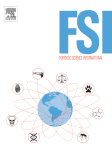By Elmarije K. van Straalena, Christianne J. de Poota, Marijke Malschd , Henk Elffers
Forensic reports use various types of conclusions, such as a categorical (CAT) conclusion or a likelihood ratio (LR). In order to correctly assess the evidence, users of forensic reports need to understand the conclusion and its evidential strength. The aim of this paper is to study the interpretation of the evidential strength of forensic conclusions by criminal justice professionals. In an online questionnaire 269 professionals assessed 768 reports on fingerprint examination and answered questions that measured self-proclaimed and actual understanding of the reports and conclusions. The reports entailed CAT, verbal LR and numerical LR conclusions with low or high evidential strength and were assessed by crime scene investigators, police detectives, public prosecutors, criminal lawyers, and judges. The results show that about a quarter of all questions measuring actual understanding of the reports were answered incorrectly. The CAT conclusion was best understood for the weak conclusions, the three strong conclusions were all assessed similarly. The weak CATconclusion correctly emphasizes the uncertainty of any conclusion type used. However, most participants underestimated the strength of this weak CAT conclusion compared to the other weak conclusion types. Looking at the self-proclaimed understanding of all professionals, they in general overestimated their actual understanding of all conclusion types.
Forensic Science International, Volume 313, August 2020, 110331


